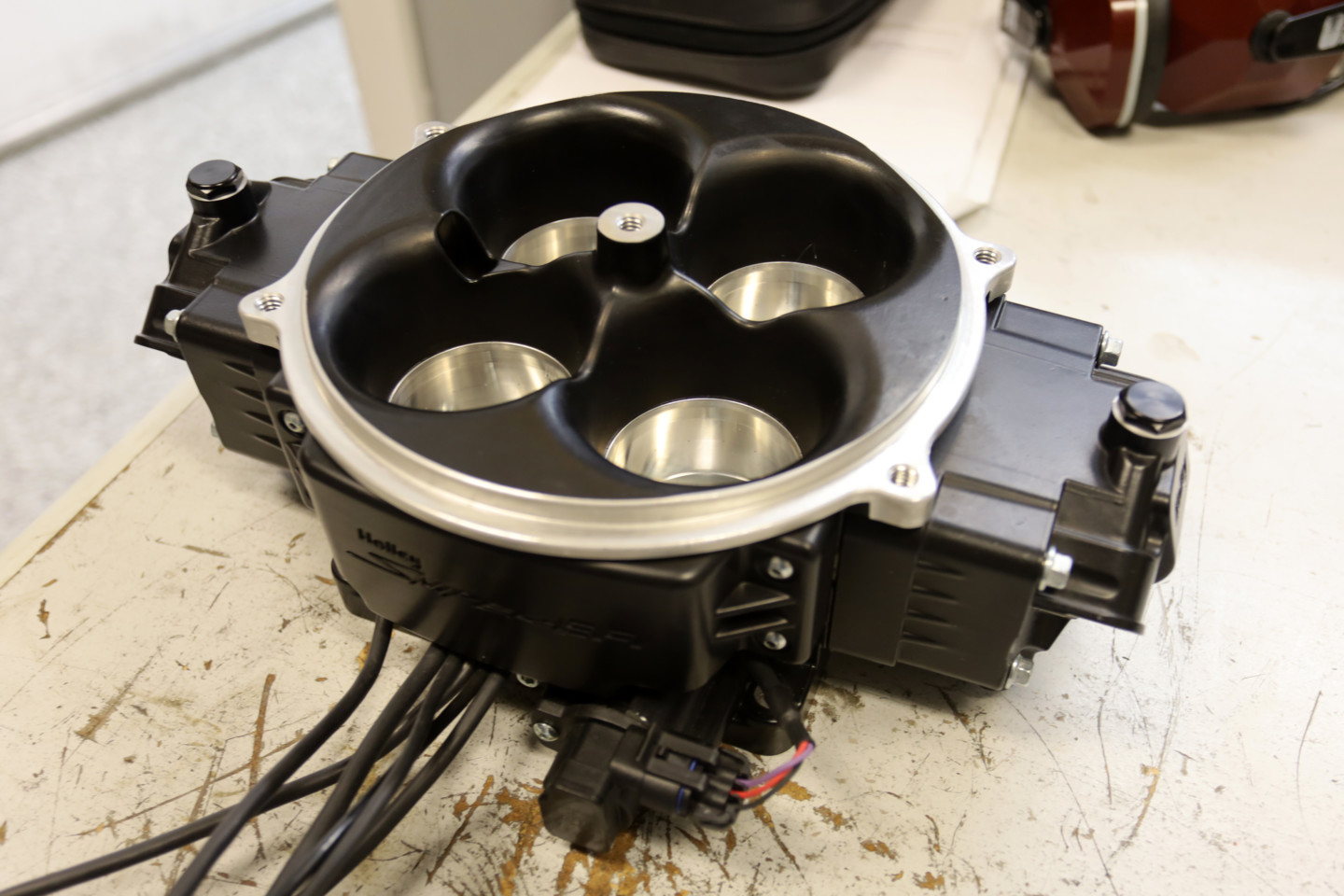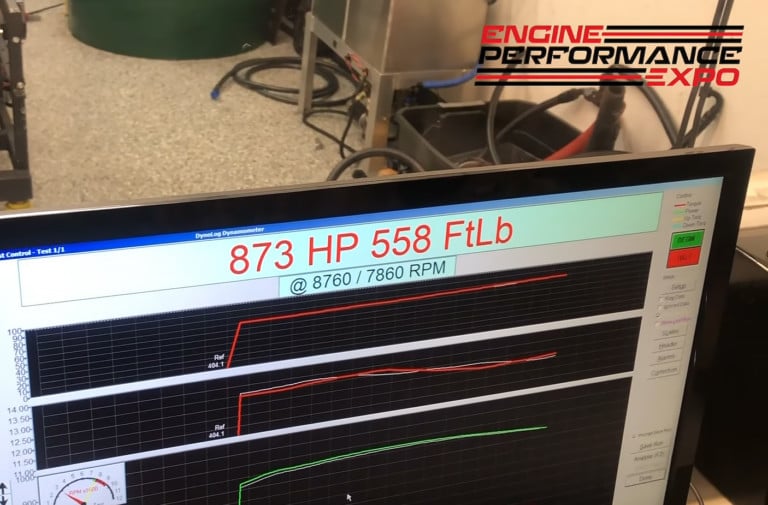Let’s face it, no one will ever definitively win the carb-vs.-EFI argument, if for no other reason than the fact that personal opinions come into play. That said, this is 2022, and not only do carburetors have a significant amount of development time, but research and development are also still being dedicated to refining them, just like EFI.
Until recently, the carburetor camp has always had the same reasoning as to why carburetors were better: the location and manner of fuel introduction with a carburetor lends itself to reduced intake charge temps because of the efficient atomization of the fuel. That is until companies like Holley started releasing the carburetor-style throttle bodies with injectors nestled in the fuel bowls.
Then, the argument was, “carbs are simpler. Just bolt one on and go.” Well, as EFI University’s Ben Strader points out in the above video, it’s not that a carburetor is simpler, it’s just that most of the hard work is done before the end-user ever sees the carburetor (more on that later). Now, take into account that Holley’s Terminator EFI is not only an incredibly powerful ECU, but has the ability to self-learn. Now we’re back to a tie between the two systems, on paper.
Carburetors aren’t simple, the work has just already been done for you. — Ben Strader, EFI University
With all of the empirical benefits the carburetor has traditionally enjoyed, matched, the only metric left is whether or not the carburetor makes more power. Well, data is kind of Strader’s bread and butter, so when the team at the Engine Performance Expo approached him to test the parts on the dyno, he readily agreed. “Obviously, I wanted to know how much power they were going to make, but also, how much work were they going to take to get running,” says Strader.
Looking At The Holley Gen-III Ultra Dominator
Before we just drop some dyno numbers and declare a winner, let’s discuss the two sets of hardware, so you don’t think we’re stacking the deck in either direction. Representing the carburetor camp is one of Holley’s Gen-III Ultra Dominators. It’s a 1,150 cfm, three-circuit design with an idle circuit, intermediate circuit, and main circuit.

The carburetor used in this test is one of Holley’s 1,150 cfm Gen-3 Ultra Dominators. It’s built with CFD-designed inlet radii and an idle bypass valve, which allows for idle adjustments without altering the position of the throttle plates.
“There are some really nice improvements Holley has made to these carburetors. The way the inlet is radiused, the way the air bleeds are located and all easy to get to now,” says Strader. “They even added an idle-air bleed like on an EFI throttle body. There is a hole on each corner of the center section that allows you to adjust the amount of air you want, to adjust the idle speed.”
Being able to adjust idle isn’t a new feature, but the way the idle is adjusted in the newer design is where the benefits lie. “The old way required you to adjust the idle stop and turn that in or out. That still gave you more airflow at idle, but it also changed the relationship of the throttle blade and the idle transfer slot. That can give you a lean or a dead spot since there’s less of that transfer slot available, and there’s not quite enough signal there at that point to start pulling in the main circuit,” Strader explains.

Here you can see the idle bypass ports, along with the billet 12-hole booster inserts for optimum fuel spray pattern.
It’s worth noting, if you are reading this article and aren’t a carb guy, or just want to brush up on your “how a carb works” knowledge, jump to the 17:27 mark in the Engine Performance Expo Episode 20 video. Strader covers the “elegant complexity” of a carburetor, ensuring everyone is equipped with at least a basic understanding of the operation of a carb.
Strader then dives into just what Holley has put into the carburetor before it ever hits the shelf in order to make it run straight out of the box. By diving deep into all of the possible adjustments in the Gen-III Ultra Dominator, you start to realize that the carburetor shows up with the equivalent of a “canned tune” in it. One that works in a lot of situations and only requires minor adjustments — if any, really — to run well.
“I get a lot of people that say, ‘carburetors are simple.’ No, carburetors aren’t simple. The work has just already been done for you. And where trouble comes up is when guys switch from carburetors to EFI. Holley realized that was a problem, and said, ‘What if we made an EFI system that walks and talks, looks, and smells like a carburetor but has all the benefits of EFI?’” says Strader. And thus the Terminator X Stealth 4500 was conceived.
Here, you can see the comparison between the Holley Gen-3 Ultra Dominator carburetor (on the left) and the Holley Terminator X Stealth 4500 throttle-body injection unit (on the right). While the TBI doesn't have boosters, there are 8 100 lb/hr injectors tucked into where the fuel bowls are on the Dominator.
Exploring The Terminator X Stealth 4500
It would probably be a safe assumption that most of you reading this are familiar with Holley’s Terminator X EFI systems. But assuming you aren’t, it is a versatile, mid-range ECU that balances user-customizable options with the ability to self-learn. This covers a wide range of enthusiast skill levels. The Terminator X Stealth 4500 combines that powerful, versatile ECU with a 4500-flange throttle-body injection unit that is capable of supporting up to 1,500 horsepower, thanks to the eight 100 lb/hr injectors hidden under the faux fuel bowls.
“The Terminator X Stealth 4500 looks just like a Dominator, but it’s EFI. Holley realized that washing the cylinders down with fuel during break-in can be a problem. To combat this, they designed an EFI system that not only looks and acts like a carburetor, but also starts right up and gets the engine running as easily out of the box as a carb,” says Strader.

The Stealth 4500 gets its name, because without looking closely, you might not realize that it’s not a Dominator carburetor. With some tidy wiring and an air cleaner, you would never know that it wasn’t a carb.
One of the biggest differences between the two products is the ease of adjustment between the two. “If I decide I want a different idle speed on the carb, I have to open the hood and get out my screwdriver, and fiddle with it until it’s where I want. Then I drive around or get to a different location, different racetrack, or the weather changes, and now I have to adjust the carburetor again.
Strader then shows the fuel table for the Holley Terminator and relates it to the main circuit of a carburetor. “We have manifold vacuum on one axis and engine RPM on the other. The values in the cells is simply how much fuel the engine is going to receive under those conditions,” explains Strader. He then goes on to show how you would set the equivalent of the idle circuit in the Terminator, as well as the equivalent of the accelerator pump, using throttle position sensor percentages.
Now, It’s Dyno Time
For the test, Strader used one of his Competition Engine Development course engines. A 350 cubic-inch LS engine, loosely based on LS7 architecture, with Frankenstein Engine Dynamics heads and a sheetmetal intake manifold, with a 4500-flange lid on it. To show just how easy the setup is with the EFI, Strader programs the Terminator using the 3.5-inch touchscreen instead of a laptop.
As soon as the engine fires up, it starts learning. The bypass circuit starts hunting in order to get to the targeted idle speed of 1,400 rpm. The oxygen sensor provides feedback to the system to trim out the air-fuel ratio as it finds the idle point, and warms up. Once warm and stable, the handle is pushed forward and the engine produces 873 horsepower at 8,760 rpm and 558 lb-ft at 7,860 rpm. Not bad at all for a plug-and-play, self-learning setup.

Here you can see that Strader used the handheld touchscreen to set up the initial base tune of the Terminator X Stealth 4500. No laptop is required to get a solid tuneup. But, if you do want to get more advanced, the Terminator X has full-featured PC-based tuning software available to you.
After pulling the Terminator Stealth 4500 off and replacing it with the 1,150-cfm Gen-III Ultra Dominator, the engine was fired up and pulls were made. The final number for the carburetor was… 873 horsepower at 8,640 and 560 lb-ft at 7,800 rpm. So, the exact same horsepower and 2 lb-ft (or 0.35 percent) more torque. The real story isn’t in the numbers, though.
“Holy cow, did the carburetor take a lot of work to get the carburetor to be as good as the EFI,” says Strader. “While we ended up making the same amount of power on the dyno, the difference was with the Terminator X Stealth 4500’s ease of use, I just put in a few parameters and answered a few basic questions on the screen, and the engine started and ran, with a tuneup that was super-close.”
The carburetor, however, was not nearly as close out of the box (and to be fair, Strader’s CED engine is far from “typical” in its configuration). “The carburetor started up and ran, but in order to get it to make the same power the EFI did, it took a lot of work,” relates Strader. “Somewhere in the neighborhood of 15 dyno pulls, changing things in the carburetor along the way to get it just as good as what we got in two dyno pulls with the EFI.”
Like we said at the beginning of this article – this likely won’t settle the carb vs. EFI debate any time soon. However, what should be clear is just how simple EFI has gotten with modern computers. Wait, scratch that. Like Strader said about carburetors, it’s not that EFI is simple, it’s just that a lot of the hard stuff is already done for you in this type of setup.
No, these aren't the same screen. You can see the dyno results of the EFI on the left, and the carb on the right. The same power and a two lb-ft difference in torque (that's about a third of one-percent in case you were wondering). The really enlightening part about those numbers is that it took two pulls to get the EFI number, and then approximately 15 pulls to get the carb dialed in enough to match the power.






















